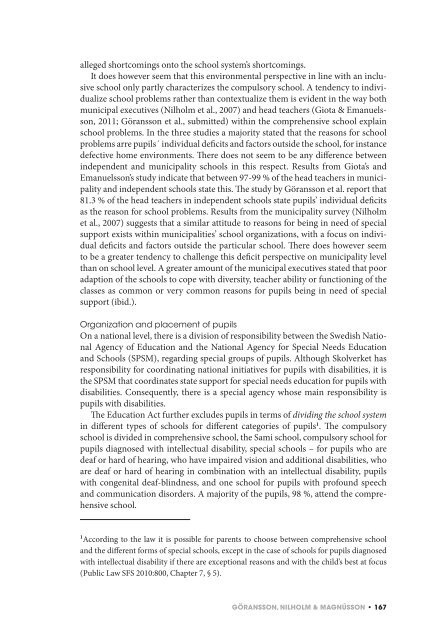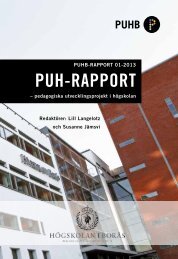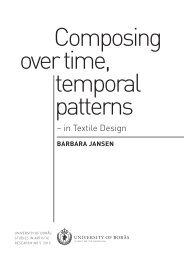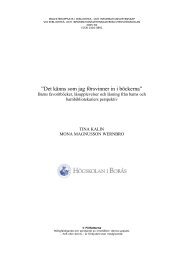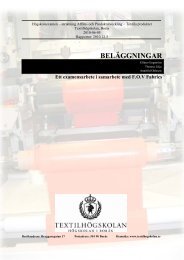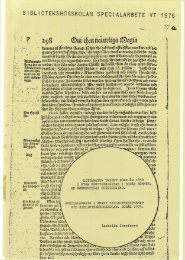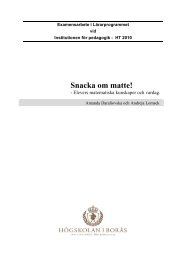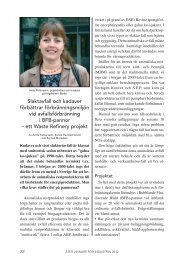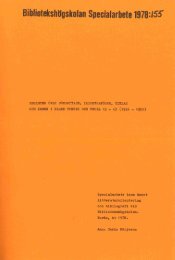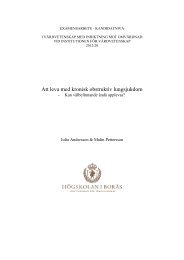Bildning för alla! - DiVA
Bildning för alla! - DiVA
Bildning för alla! - DiVA
Create successful ePaper yourself
Turn your PDF publications into a flip-book with our unique Google optimized e-Paper software.
alleged shortcomings onto the school system’s shortcomings.<br />
It does however seem that this environmental perspective in line with an inclusive<br />
school only partly characterizes the compulsory school. A tendency to individualize<br />
school problems rather than contextualize them is evident in the way both<br />
municipal executives (Nilholm et al., 2007) and head teachers (Giota & Emanuelsson,<br />
2011; Göransson et al., submitted) within the comprehensive school explain<br />
school problems. In the three studies a majority stated that the reasons for school<br />
problems arre pupils´ individual deficits and factors outside the school, for instance<br />
defective home environments. There does not seem to be any difference between<br />
independent and municipality schools in this respect. Results from Giota’s and<br />
Emanuelsson’s study indicate that between 97-99 % of the head teachers in municipality<br />
and independent schools state this. The study by Göransson et al. report that<br />
81.3 % of the head teachers in independent schools state pupils’ individual deficits<br />
as the reason for school problems. Results from the municipality survey (Nilholm<br />
et al., 2007) suggests that a similar attitude to reasons for being in need of special<br />
support exists within municipalities’ school organizations, with a focus on individual<br />
deficits and factors outside the particular school. There does however seem<br />
to be a greater tendency to challenge this deficit perspective on municipality level<br />
than on school level. A greater amount of the municipal executives stated that poor<br />
adaption of the schools to cope with diversity, teacher ability or functioning of the<br />
classes as common or very common reasons for pupils being in need of special<br />
support (ibid.).<br />
Organization and placement of pupils<br />
On a national level, there is a division of responsibility between the Swedish National<br />
Agency of Education and the National Agency for Special Needs Education<br />
and Schools (SPSM), regarding special groups of pupils. Although Skolverket has<br />
responsibility for coordinating national initiatives for pupils with disabilities, it is<br />
the SPSM that coordinates state support for special needs education for pupils with<br />
disabilities. Consequently, there is a special agency whose main responsibility is<br />
pupils with disabilities.<br />
The Education Act further excludes pupils in terms of dividing the school system<br />
in different types of schools for different categories of pupils 1 . The compulsory<br />
school is divided in comprehensive school, the Sami school, compulsory school for<br />
pupils diagnosed with intellectual disability, special schools – for pupils who are<br />
deaf or hard of hearing, who have impaired vision and additional disabilities, who<br />
are deaf or hard of hearing in combination with an intellectual disability, pupils<br />
with congenital deaf-blindness, and one school for pupils with profound speech<br />
and communication disorders. A majority of the pupils, 98 %, attend the comprehensive<br />
school.<br />
1 According to the law it is possible for parents to choose between comprehensive school<br />
and the different forms of special schools, except in the case of schools for pupils diagnosed<br />
with intellectual disability if there are exceptional reasons and with the child’s best at focus<br />
(Public Law SFS 2010:800, Chapter 7, § 5).<br />
gÖrAnSSOn, nilhOlM & MAgnÚSSOn • 167


